Los Angeles to San Francisco in under three hours by train!
California is building a 220-mph high-speed line to make it a reality.
And, it is much more than that. With timed connections to California’s excellent conventional trains and buses, high-speed rail will link hundreds of cities and towns across the state.
A federal rail program, structured like the Interstate Highway program, is needed to accelerate progress.
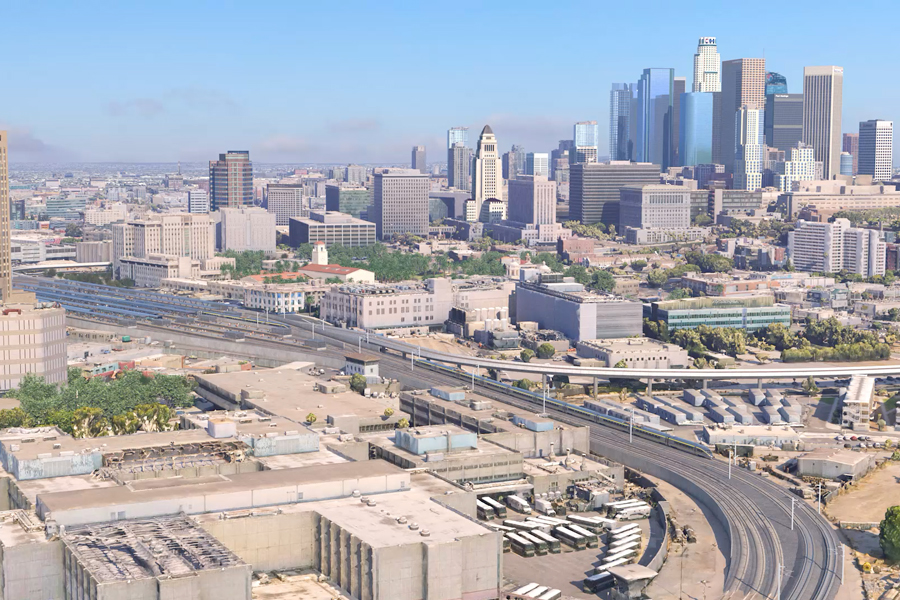
The California High Speed Rail Authority and LA Metro are partnering to expand and modernize LA Union Station.
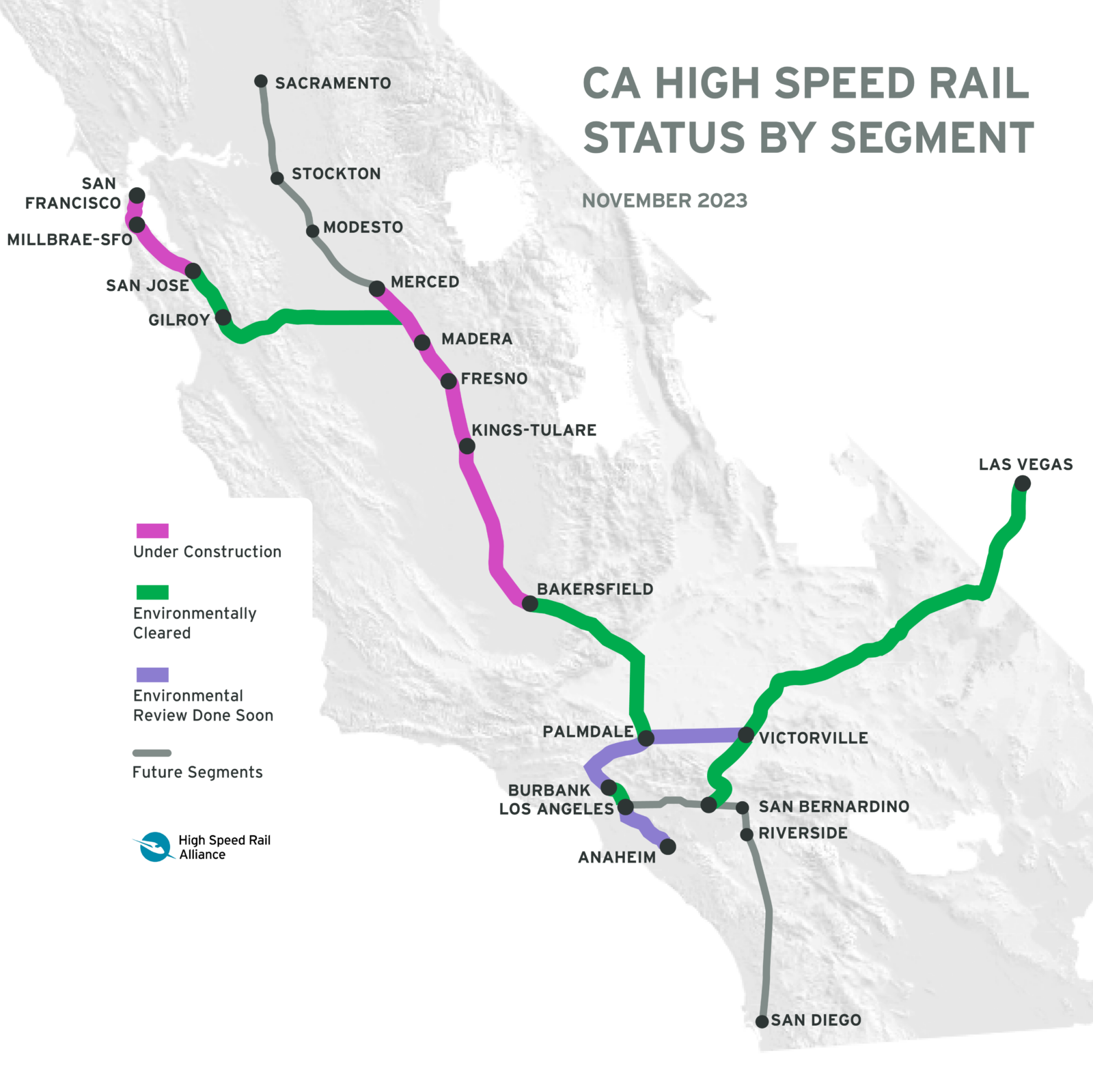
Environmental clearance is completed for most of the route.
A Phased Approach
California is using the Integrated Network Approach. The high-speed line is being constructed in stages, progressively integrated into an already robust network of trains and buses. The Interstate Highway network was built this way.
With this approach, everyone begins to enjoy the benefits of high-speed rail – even before the entire route is complete. As each finished segment is added to the network, it further reduces travel times and increases ridership across the system, not just between high-speed rail stations.
Two Segments are Under Construction
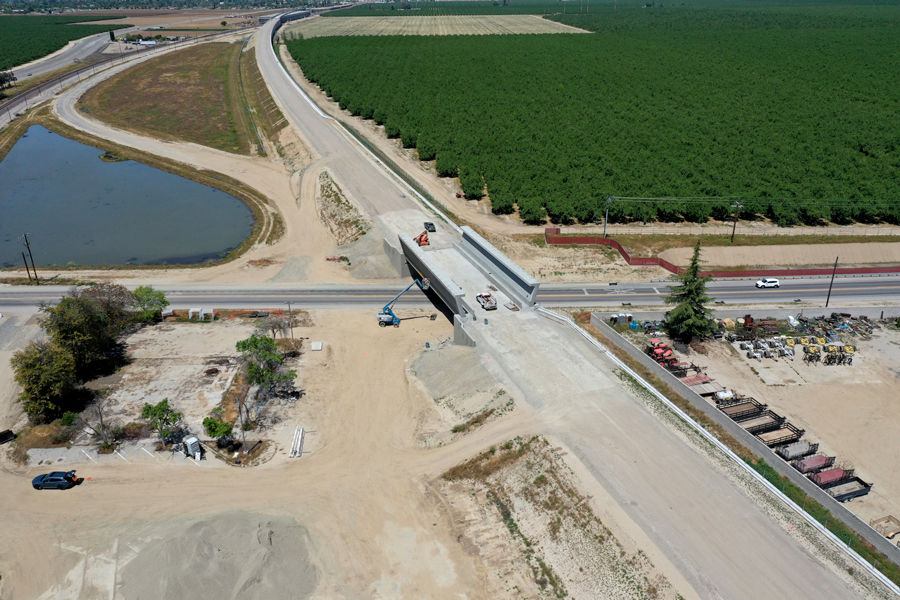
The Central Valley
The Central Valley segment will be the backbone of California’s statewide rail and bus network. Most connecting services will be doubled when it opens.
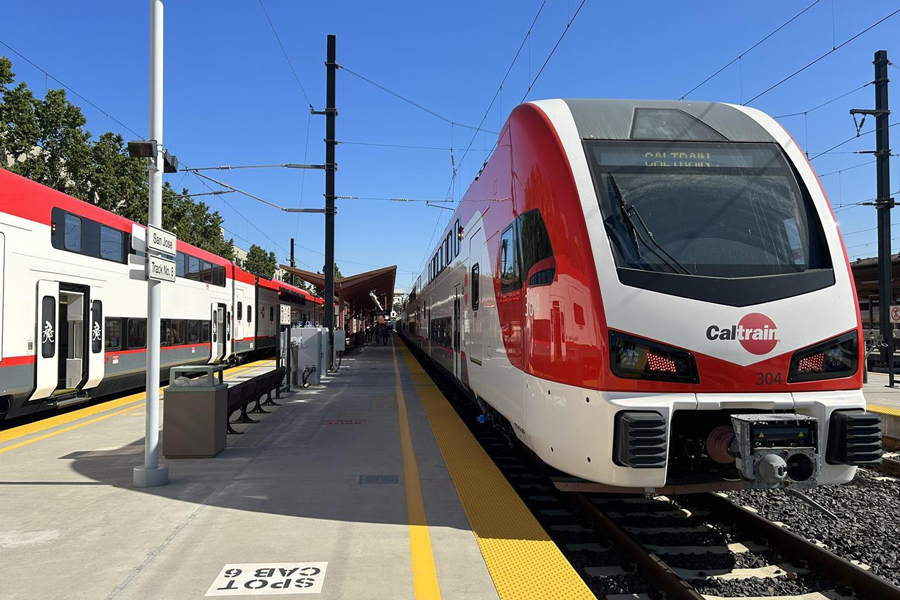
Caltrain Electrification
Caltrain is replacing diesel-hauled commuter trains with electrified regional rail. High-speed trains will use the tracks to access Silicon Valley.
Benefiting the Whole State
High-speed rail is more than just connecting the Bay Area and L.A. These trains will directly serve more than 15 cities on the main trunk line, forming the backbone of a much larger transportation system.
Integrated with California’s extensive network of trains and buses, high-speed rail will ultimately connect hundreds of cities and towns across the state.
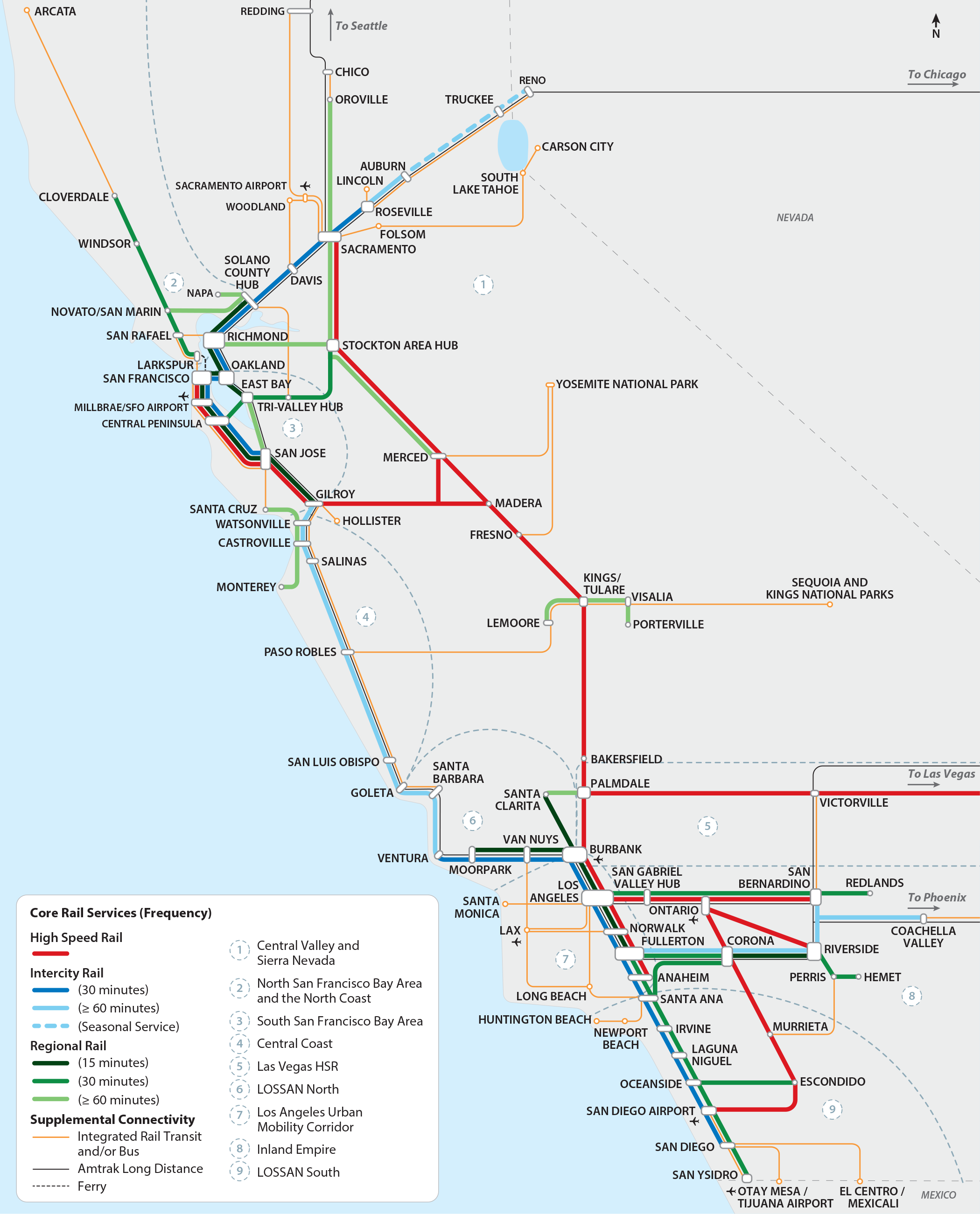
California adopted the nation’s first statewide integrated railplan in 2018.
Statewide Progress
Substantial progress is in happening on other segments.
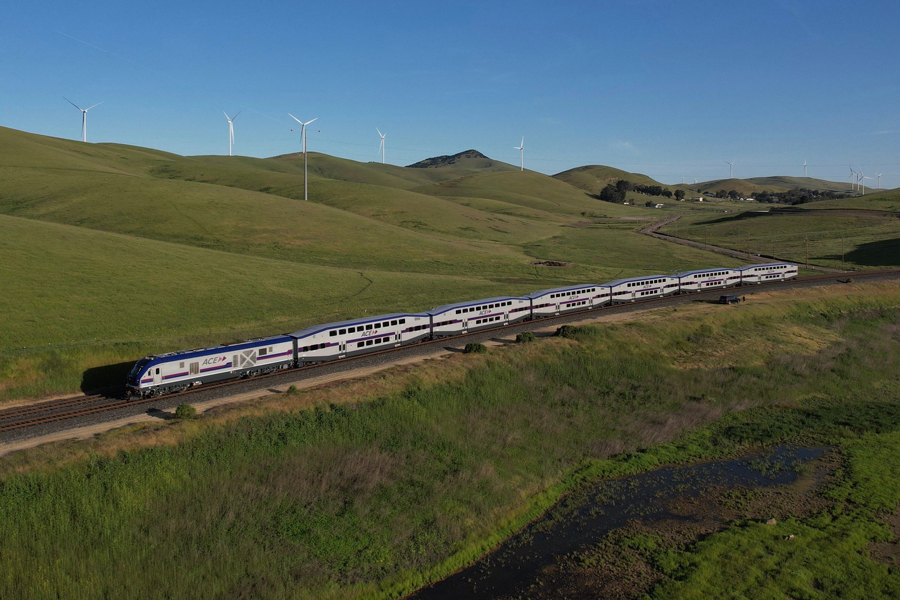
Ace & San Joaquin Expansion
The ACE and San Joaquin JPAs are working to expand service from Merced to Sacramento and Oakland to match frequencies on the Central Valley high-speed line.
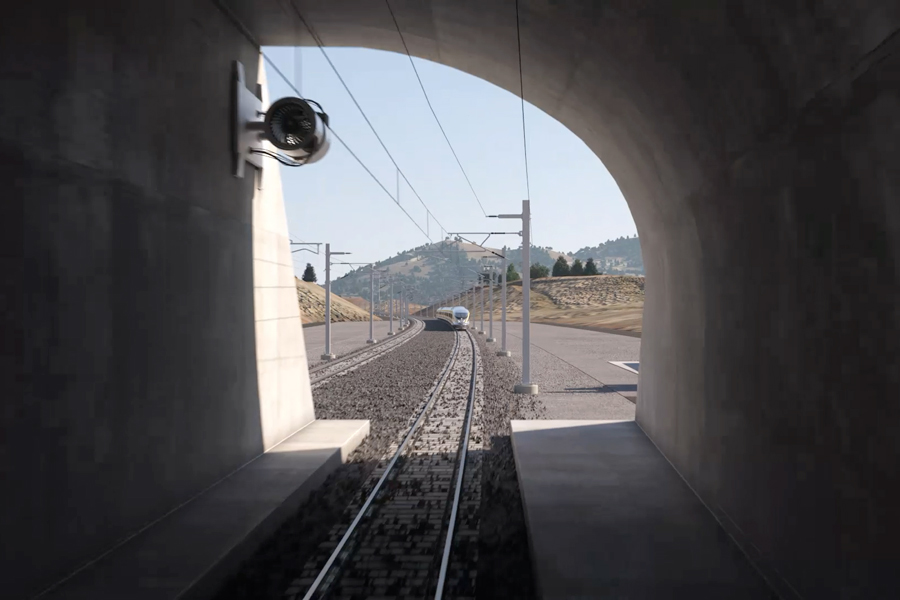
Tehachapi Pass
A new route through Tehachapi Pass will close the missing link in California’s passenger rail network.
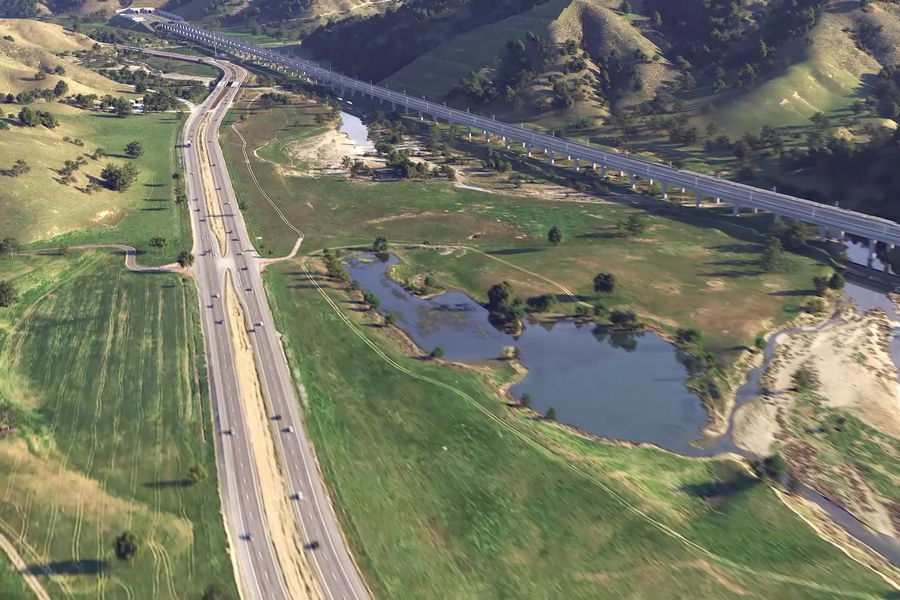
Pacheco Pass
A new route linking the Central Valley to the Silicon Valley through Pacheco Pass will slice hours off Amtrak’s circuitous routing.
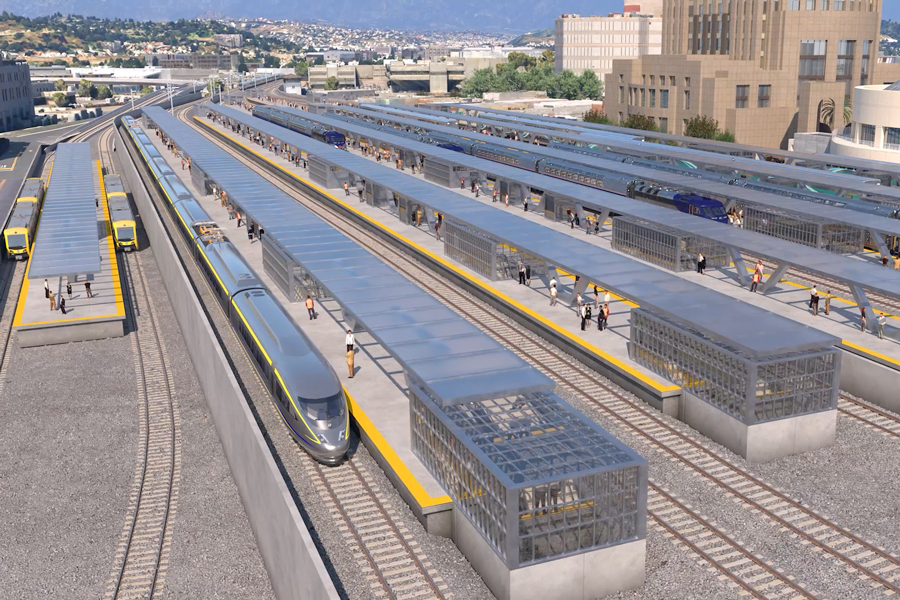
LinkUS
Los Angeles Union Station is being modernized and expanded for both high-speed and regional rail.
Brightline West
Brightline West has environmental clearance to construct a new high-speed line linking Las Vegas and the LA Basin.
A connection between Brightline’s Victorville station and CAHSRA’s Palmdale station is being designed by the High Desert Corridor JPA.
Brightline West and California High Speed Rail will feed traffic back and forth, making each more valuable, and, making the critical Tehachapi Pass crossing easier to finance.
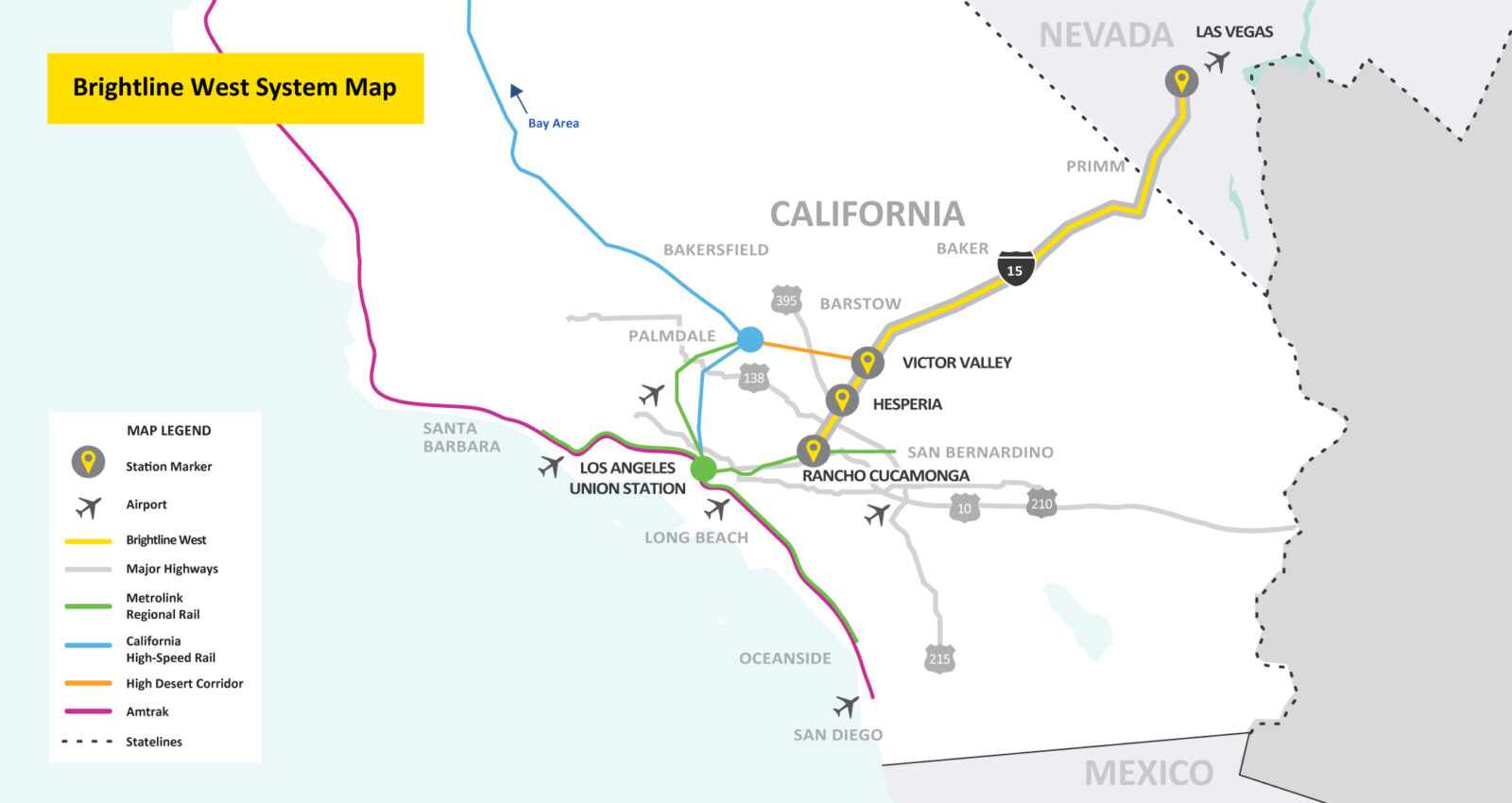
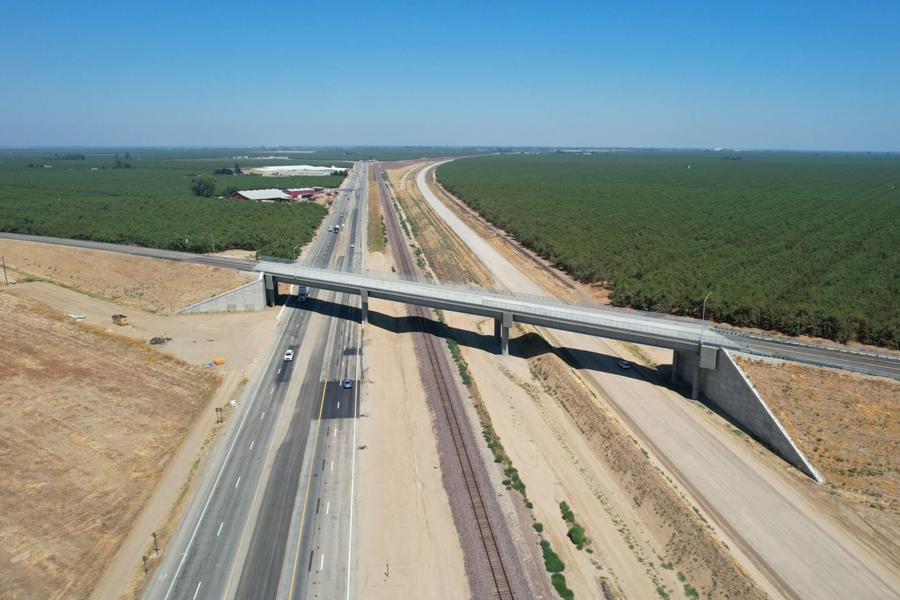
The new Merced Avenue overpass takes traffic over SR 43, as well as BNSF and future high-speed rail lines.
A federal program is needed to get it done.
California is far ahead of the rest of the country in developing high-speed and regional rail. But they are unique. Most of their routes do not cross state lines.
Most states will require an Interstate Railway Program to build multi-state networks. And California cannot achieve its full potential without a federally-led program.
The Bi-Partisan Infrastructure Law is a great step in the right direction. Much more needs to be done.
Please join us in asking Congress to create an Interstate Railway Program.

Take Action
The country needs an Interstate Railway Program, like the Interstate Highway Program, to take full advantage of the community, economic, and environmental benefits of trains.
Please join with us in asking Congress to create a national railway program to re-connect America with fast, frequent, and affordable trains.
